Over the years we have grown increasingly attentive to the intricate details of the spaces we live in. Our focus has been on designs that optimise low energy and low embodied carbon. One of the critical facets of this work is the understanding and use of the materials we put into these spaces. One such material is plaster. A seemingly mundane wall finish, but in reality, it is an art form that can utterly transform the ambience of a space. This guide is designed to provide you with an insightful journey into the world of modern plaster walls, exploring six distinct methods that have been extensively employed in our recent projects.
Chapter 1: The Revival of Plaster
Plaster has been making a remarkable resurgence, redefining the boundaries of interior architecture and design. The reason for this revival is simple: plaster provides depth and luminosity to walls that subtly change with the light, offering an understated transformation to the look and feel of a house. The uniqueness of plaster is that it requires no paint; left in its raw state, it is a sustainable and natural material – breathable and free of chemicals and VOCs.
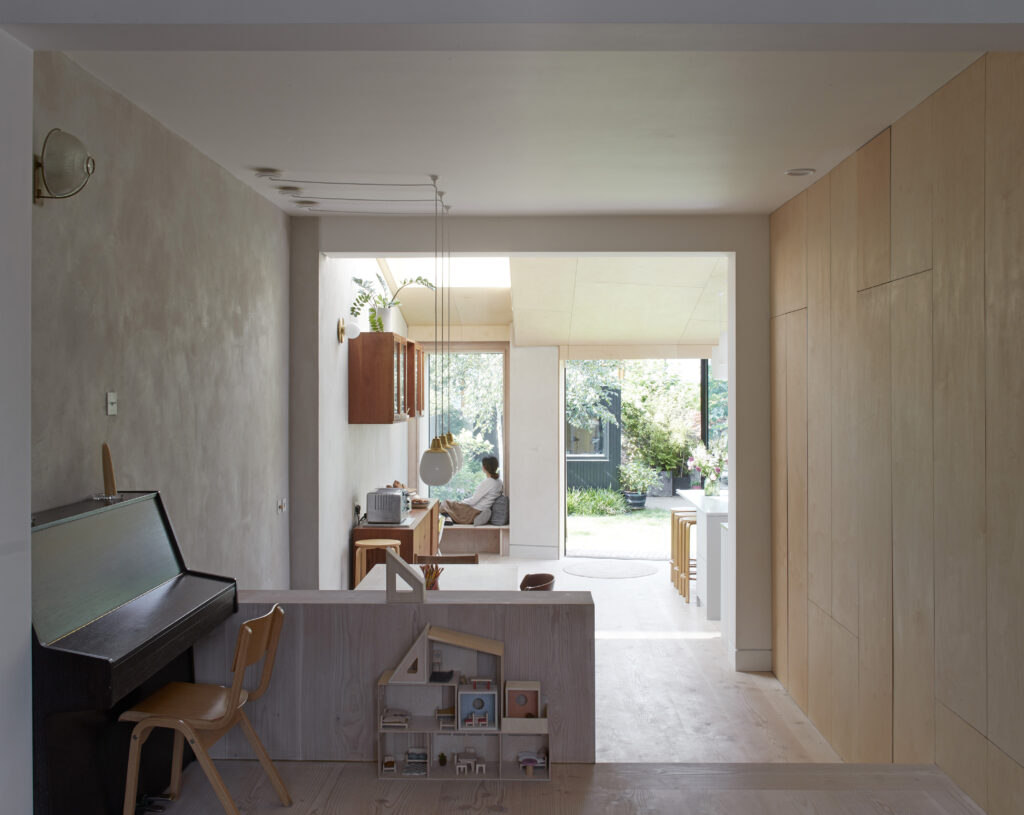
Chapter 2: The Cost and Value of Plaster
Plaster, a timeless and versatile material, has been utilised for centuries in construction and interior design. While its advantages are numerous, the debate between plaster and drywall has persisted, leading to considerations of cost and value. This chapter aims to delve into these aspects, exploring why plaster might be worth the investment despite its seemingly higher initial costs.
The Initial Cost of Plaster
Plaster walls, without a doubt, tend to be more expensive than their painted drywall counterparts. This disparity in cost is predominantly because plastering requires more skilled labour, and attention to detail, and in most cases involves a three-coat process which varies depending on the type of plaster finish chosen.
Each coat requires time and precision, leading to higher labour costs, and the materials themselves may be more expensive. These factors collectively contribute to the increased initial outlay for plaster walls.
The Value Proposition of Plaster
While the costs may seem prohibitive, it is essential to look beyond the immediate expenses and into the long-term value that plaster walls can offer. Here are some factors that contribute to the value of plaster:
- Durability: Plaster walls are renowned for their longevity and resistance to wear and tear. Properly maintained, they can outlast painted walls and ceilings by decades, making them a wise investment for those looking for a long-lasting solution.
- Aesthetic Appeal: Plaster provides a unique, rich texture that is difficult to replicate with painted walls and ceilings. Its ability to be moulded into various shapes and styles adds a distinctive character to interiors, enhancing the overall beauty of the living space.
- Sound Insulation: Plaster walls offer superior sound insulation compared to painted walls and ceilings, contributing to a more peaceful and serene environment within the home.
- Energy Efficiency: Plaster’s natural thermal mass helps in regulating the internal temperature of a building, thus potentially reducing energy bills.
In evaluating the cost and value of plaster, it is crucial to understand that the initial expense is part of a more extensive investment in quality, durability, and aesthetic appeal. While it may seem like a premium option, the benefits of plaster walls often justify the cost, providing homeowners with a long-term asset that enhances both comfort and elegance within their living spaces.
For those considering building or renovating a home, the choice between plaster and painted walls and ceilings should not be merely a matter of cost. By taking into account the unique advantages and enduring beauty that plaster offers, one might find that the added expense is not just justified but a wise and rewarding investment.
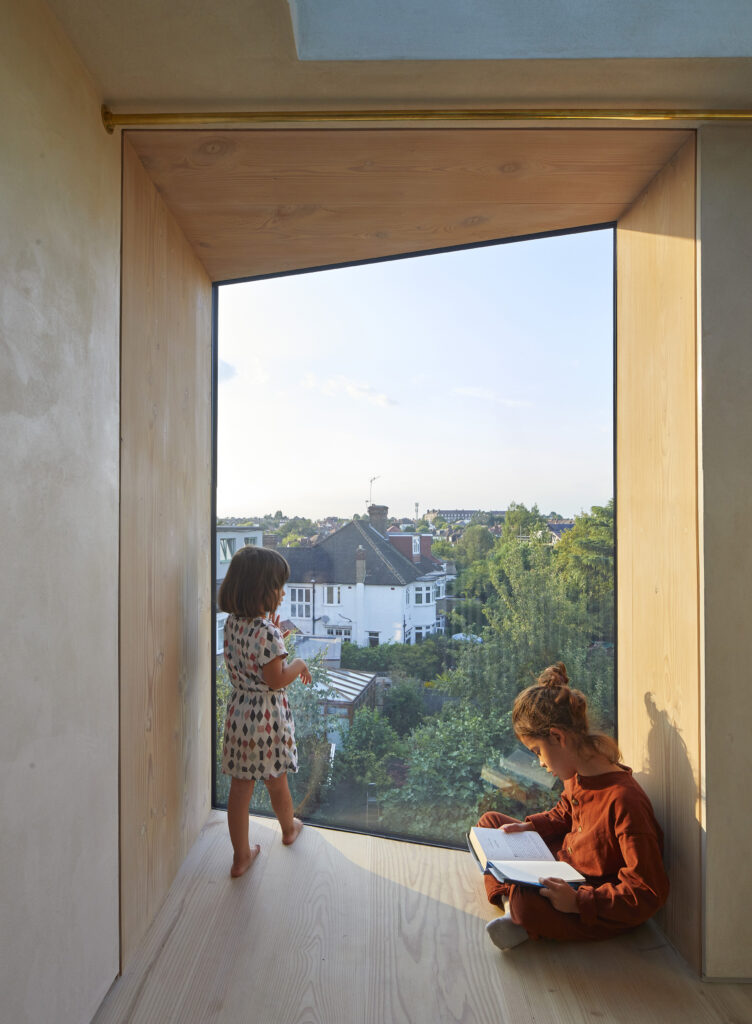
Chapter 3: Preparation and Patience
Before delving into the different types of plaster, it’s crucial to understand the prerequisites. Plastering is a complex process, involving the application of different materials to internal walls to achieve a smooth and durable surface. The process is intricate and requires attention to detail and adherence to specific guidelines. All plaster types need a substrate to bond to, and this varies by type and brand, as does the durability and waterproofness of the particular plaster. Installation demands trowelling skills and patience – each layer must dry before applying the next.
The preparation of the substrate for plastering internal walls is a vital step that influences the quality and longevity of the final surface. Understanding the specific requirements for different plaster types and taking care to follow appropriate preparation procedures ensures a successful application. Whether a professional tradesperson or a DIY enthusiast, attention to detail, patience, and adherence to best practices will lead to a satisfactory outcome.

Chapter 4: Clay Plaster
Clay plaster, a unique combination of clay, sand, and pigments, is gaining acclaim in the modern world of interior finishes for its health benefits and aesthetic appeal. Notably, the use of clay plaster offers an environmentally friendly and aesthetically pleasing design, which has become a favourite choice for individuals with chemical sensitivities.
Clay Plaster: Composition and Benefits
Made from natural elements, clay plaster usually yields a matte, sometimes rough, finish, providing a range of earthy shades that can add warmth and character to any space. Its natural composition makes it a healthy option for interiors, free from artificial chemicals that can trigger sensitivities.
One of the defining features of clay plaster is its ability to regulate humidity within the house. Acting as a natural absorbent, it takes in moisture and releases it when necessary, creating a balanced indoor environment.
However, its use comes with certain limitations, primarily in areas exposed to excessive moisture such as bathrooms and kitchens. Despite this, the advantages of clay plaster make it a wise choice for living areas, bedrooms, and other spaces where moisture control and aesthetic appeal are paramount.
Clayworks: A Pioneer in Clay Plaster Finishes
Among the companies specialising in clay plaster, Clayworks stands out for its innovation and dedication to sustainable practices. Founded by Adam Weismann and Katy Bryce in 2002, Clayworks originated from a passion for nature and a commitment to ecological building methods.
Katy and Adam’s aspiration led them to investigate the employment of architectural materials, with a particular emphasis on earth. They aimed to create a harmonious balance in buildings, focusing on being environmentally friendly without compromising on aesthetics.
Clayworks clay plasters are distinct combinations of raw, unfired clays mixed with minerals and pigments, creating healthy and breathable finishes for the interiors of walls and ceilings. Over the years, these plasters have been specified in various projects with amazing results, as showcased in the images in this article.
Sustainability and Aesthetics: Crafted in Cornwall
The natural abundance of raw materials in Cornwall has provided Clayworks with a rich supply of resources to craft some of the most eco-friendly and health-conscious wall finishes on the market. These plasters are not only about appearance; they stand as a testament to sustainable practices that embrace the importance of environmental responsibility.
Clay plaster finishes offer an exciting and meaningful direction in interior design. With health benefits, aesthetic appeal, and an inherent connection to nature, they resonate with modern sensibilities while paying homage to traditional methods.
The journey of Clayworks illustrates how innovation and a love for nature can lead to beautiful and responsible design. Their clay plasters are a perfect example of what can be achieved when artistry and sustainability are married together.
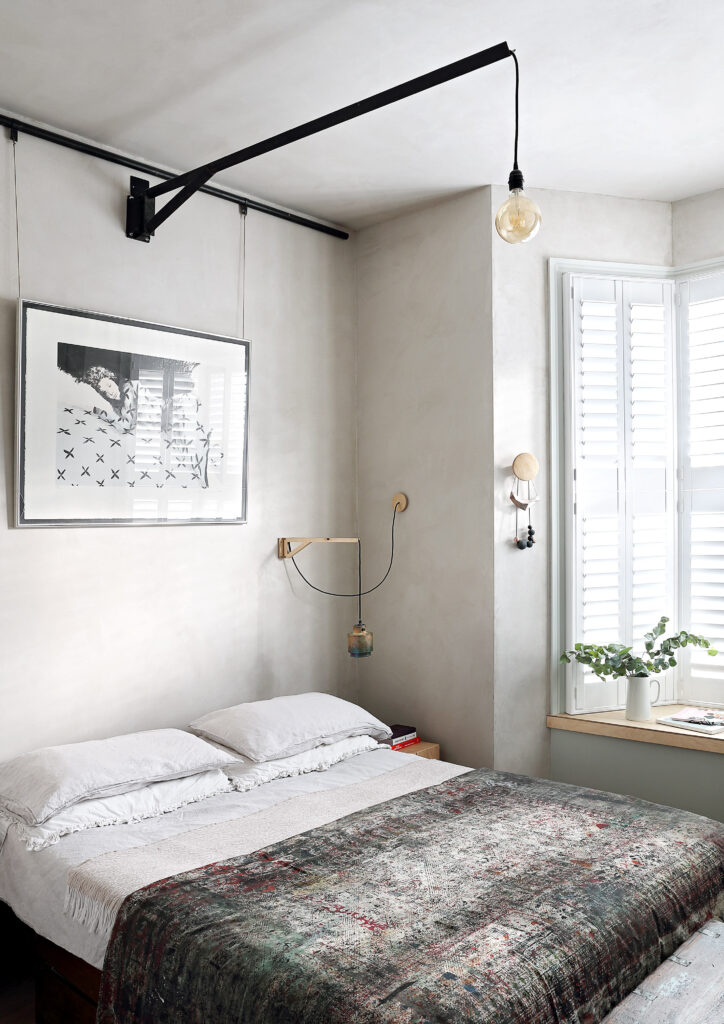
Chapter 5: Slaked Lime Plaster
Lime plaster, a traditional internal wall finish, boasts a rich history dating back over 140 centuries. Originating in northern Jordan, this ancient technique is still prevalent today despite the emergence of modern alternatives like gypsum-based and cement plasters.
Understanding Lime Plaster
Comprised of lime, sand, and water, lime plaster is used to cover the surfaces of internal walls and ceilings before painting. Sometimes fibres such as animal hair are mixed in to reinforce the structure and enhance the bond with the underlying substructure.
Lime, the essential ingredient, is derived from materials such as limestone, chalk, or seashells. These are formed from calcium carbonate and burnt to create quicklime.
There are two principal types of lime used:
- Non-Hydraulic Lime: Made from pure limestone, this variant is available as lime putty, offering excellent flexibility and breathability.
- Hydraulic Lime: This type, produced from limestone with natural impurities, comes in powder form. Upon contact with water, it starts to set, offering distinct properties.
Why Choose Lime Plaster? The Advantages
Though largely overtaken by modern materials, lime plaster’s significance is being rediscovered, especially by renovators and owners of period properties. Even those constructing new homes are recognising its myriad benefits. Here’s why lime plaster is worth considering:
- Damp Prevention: As a breathable material, lime plaster allows air to pass through, unlike denser cement or polymer-based alternatives. This feature enables moisture to escape, virtually eliminating any damp issues, a common problem in old properties due to impermeable materials.
- Eco-Friendly Choice: Lime plaster requires less energy to produce compared to other types of modern plaster, plus it absorbs carbon dioxide from the atmosphere, making it a sustainable option.
- Enhances Air Quality: Lime plaster acts as a natural dehumidifier, absorbing moisture when necessary and releasing it when the air becomes too dry.
- Longevity: Composed of minuscule particles, lime plaster penetrates deeply into even the tiniest gaps, forming a secure bond. Over time, calcite crystals form, strengthening the plaster and making it extremely durable.
- Flexibility: Unlike more brittle, cement-like materials, lime is exceptionally forgiving and less prone to cracking.
- Aesthetic Appeal: With its soft, natural finish, lime plaster offers a unique beauty that fits both rustic and contemporary properties.
Rediscovering Lime Plaster
While modern gypsum-based plasters have become a standard choice for many, the timeless appeal and multifaceted benefits of lime plaster are rekindling interest among homeowners and builders alike. Whether for its eco-friendliness, ability to prevent damp, or its unique aesthetics, lime plaster stands as an enduring and versatile option that resonates with both tradition and modernity.
For those looking to bring a touch of history into their homes or seeking sustainable alternatives, lime plaster might just be the perfect answer, uniting the past and present in a beautiful and functional way.
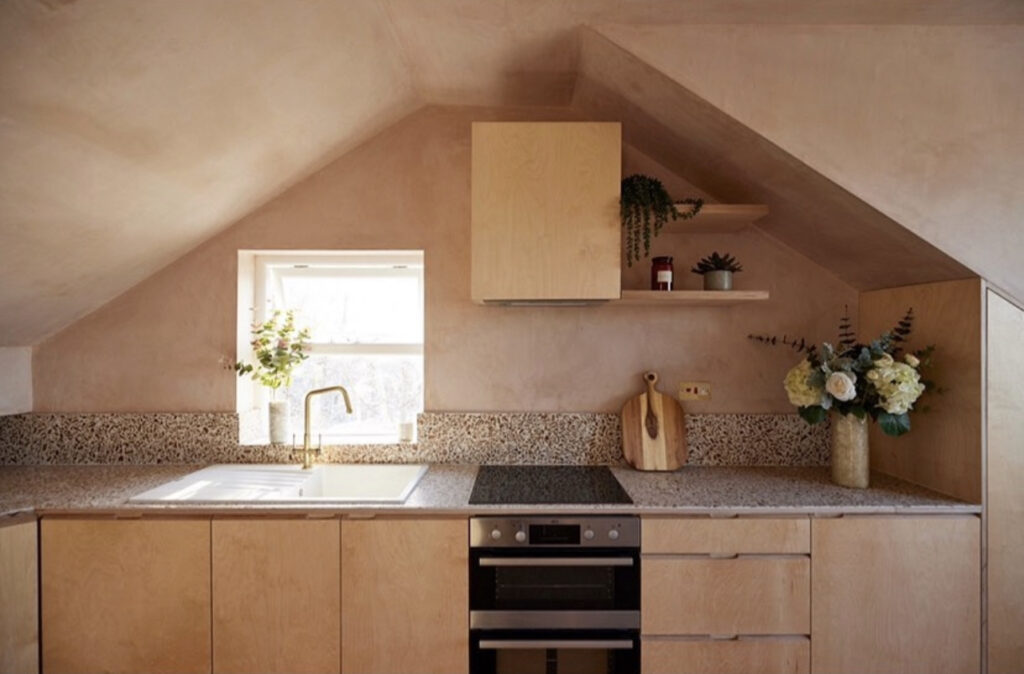
Chapter 6: Gypsum (Pink) Plaster
Interior plaster finishes have been used throughout history to create durable and attractive wall surfaces. Their unique charm offers a tactile and visual experience, injecting a subtle, earthy wash of colour into your home. If you’re fond of industrial and shabby chic interiors, these raw plaster finishes can perfectly enhance your space, lending an air of natural elegance. This style of finish is not only aesthetically appealing but practical too. Since exposed plaster walls forego the need for paint, they save on costs and offer the added benefit of being chemical-free.
Among various types of plaster, gypsum plaster is somewhat more delicate and temperamental than its counterpart, slaked lime. This plaster requires meticulous attention during application, but when handled with care, it can offer excellent results. To create the ideal finish, gypsum plaster must be mixed with water and applied promptly – within 35 to 40 minutes. Delaying this process can lead to the formation of weaknesses known as “cold joints,” which can affect the finish’s durability.
Despite these minor inconveniences, gypsum plaster comes with several upsides. It’s less expensive than lime plaster and necessitates fewer coats, making it a cost-effective choice for many. Moreover, gypsum plaster offers an element of customisation, as it can be tinted to create a variety of visual effects, ranging from soft pastels to dramatic dark hues.
However, it’s crucial to remember that plastering walls is a labour-intensive task that ideally should be entrusted to a professional. It may come with a higher initial cost than ordinary drywall, but the longevity of plaster walls is remarkable. Typically, they will last significantly longer than your average painted drywall, making the investment worthwhile in the long run.
In conclusion, plaster finishes for internal walls and ceilings are an exquisite choice for those desiring a unique, enduring and aesthetically pleasing home interior. Their inherent texture, chemical-free nature, and cost-saving aspects make plaster walls an attractive alternative to the ubiquitous painted wall.
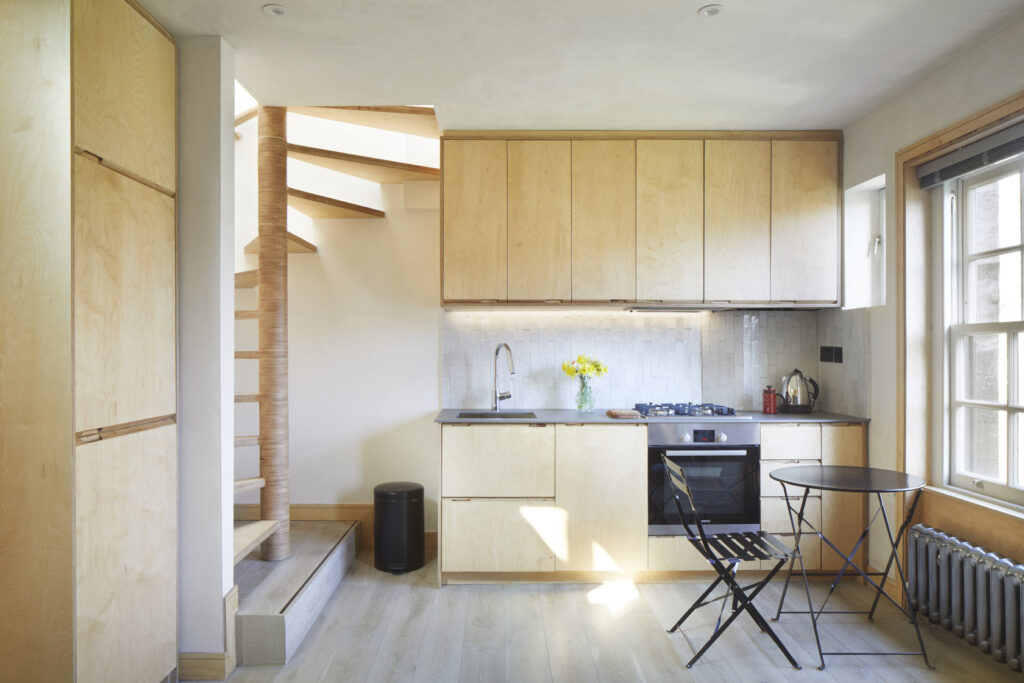
Chapter 7: Venetian Plaster
Among the myriad plaster finishes available today, Venetian plaster stands as a testament to the timeless elegance that interior finishes can bestow upon a living space. It’s an ancient technique, steeped in tradition and sophistication, originating from the grandeur of Venetian palaces. This decorative style, with its rich lustre and captivating textures, can transform even the most ordinary of spaces into an interior that radiates charm and grandiosity reminiscent of a Venetian palace.
Venetian plaster, also known as ‘Stucco Veneziano‘ (or polished plaster), is a finishing technique where pigment is introduced into slaked lime plaster. This is often enhanced with the addition of marble dust, which helps to give the plaster its distinct polished and high-sheen quality. This quality sets Venetian plaster apart, lending the walls a depth and radiance that’s truly unique.
The process of applying Venetian plaster is a fine art, honed over centuries. It involves several stages of meticulous application, burnishing and polishing. The composition of slaked lime and marble dust allows for multiple thin layers of plaster to be applied, each one contributing to the depth and sheen of the finished product. The plaster is usually applied with a spatula or trowel in thin, overlapping strokes, creating a distinctive, layered effect.
The pigments used in Venetian plaster offer limitless colour options, opening a world of possibilities for your interior décor. The natural lime in the plaster creates a captivating interplay with the pigments, giving rise to subtle tonal variations and an iridescent glow that changes with the angle of light. From soft, understated pastels to bold, vibrant hues, the colour palette is as diverse as your imagination.
But Venetian plaster is more than just aesthetically pleasing; it also possesses practical benefits. The slaked lime in the plaster makes it naturally anti-bacterial and mould-resistant, offering a healthy and durable finish. Additionally, lime plaster can absorb and release moisture, making it breathable and helping to regulate indoor humidity levels.
However, achieving the perfect Venetian plaster finish requires a level of expertise and patience that comes with professional training and experience. Despite being a labour-intensive and skilled process, the resulting finish offers a breathtaking transformation, presenting a visually stunning, tactile surface that can imbue your space with a distinct, refined charm.
In conclusion, Venetian plaster offers an age-old solution to modern interior design, blending artistry, tradition, and practicality. Its unique depth, lustre, and limitless colour options make it a versatile and sophisticated choice for those wishing to imbue their homes with timeless elegance. It is indeed an exquisite testament to the enduring beauty of plaster finishes.
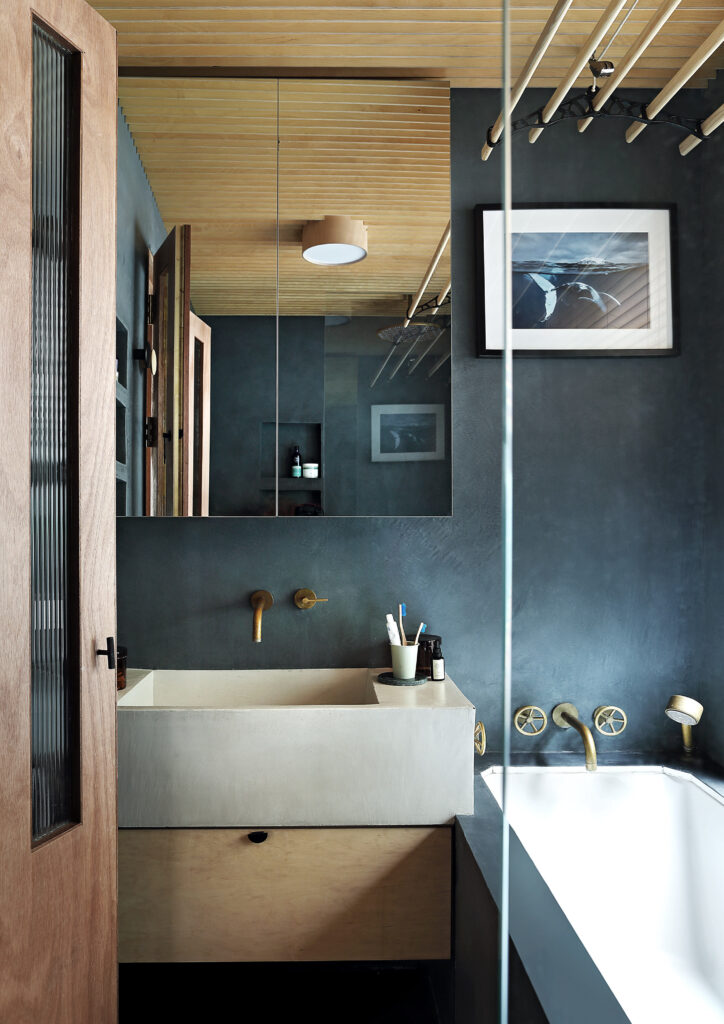
Chapter 8: Tadelakt
In the world of plaster finishes, one traditional Moroccan technique has been capturing the attention of designers and homeowners alike: Tadelakt. This distinctive plaster, composed of lime and black olive soap, is not only aesthetically engaging but incredibly functional. Tadelakt is most renowned for its waterproof qualities, and it’s this unique characteristic that makes it ideally suited for showers, baths, sinks, and tubs.
The Origins of Tadelakt
Tadelakt, meaning ‘to rub’ or ‘knead’ in Arabic, hails from the ancient architectural traditions of Morocco. Its origins can be traced back hundreds of years when it became a hallmark of Moroccan hammams (bathhouses) and palatial architecture. This waterproof plaster finish has become synonymous with luxury and the exotic allure of North African design.
Composition and Application
Tadelakt is created from a particular type of lime known as hydraulic lime, often sourced from the Marrakech region in Morocco. This lime is combined with black olive soap, creating a mixture that, when applied correctly, results in a smooth, waterproof membrane.
The application of Tadelakt is an intricate, labour-intensive process, demanding expertise and precision. The plaster must be applied in several thin layers, followed by a careful process of polishing with a river stone and sealing with soap. This action creates the waterproof barrier that characterises Tadelakt and gives it its beautiful, high-gloss finish.
Uses and Versatility
The waterproof nature of Tadelakt has seen it used extensively in areas prone to moisture, such as bathrooms, showers, and kitchens. It’s not limited to walls and floors, either; Tadelakt can be sculpted to form sinks, tubs, and even decorative water features.
One of the standout features of Tadelakt is its aesthetic flexibility. It lends itself to a wide array of colours, textures, and finishes. From the traditional earthy tones of Moroccan design to more contemporary hues, Tadelakt can be customised to fit a wide variety of interior styles.
Environmental and Health Benefits
Beyond its visual appeal, Tadelakt is often praised for its ecological and health benefits. The natural components make it free from synthetic chemicals, contributing to a healthy indoor environment. Its breathability also aids in regulating humidity levels, enhancing overall indoor comfort.
Conclusion
Tadelakt is more than just a plaster finish; it is a piece of Moroccan heritage, an art form that merges function and beauty. Its waterproof nature, combined with its rich aesthetic appeal, makes it a unique choice in modern design. From the luxurious hammams of Marrakech to the bathrooms and kitchens of contemporary homes, Tadelakt continues to enchant those in search of something extraordinary in their interior spaces. Its blend of tradition, beauty, and practicality makes it a prominent choice in plaster finishes.
Chapter 9: Neo Plaster
The field of plaster wall finishes is constantly evolving, with companies always in search of innovative approaches to enhance efficiency and aesthetics. Today, numerous companies are creating unique plaster wall finishes that require fewer coats, effectively streamlining the application process. These innovations often include acrylics and other ingredients to produce a plethora of finishes, maintaining the same depth and texture traditionally associated with plaster.
The Evolution of Plaster Finishes
Plaster finishes have a long history, dating back centuries. They’ve been used extensively in architectural and decorative contexts for their versatility, beauty, and durability. However, the application of traditional plaster finishes can be a time-consuming process, often requiring multiple coats and a lengthy drying period.
In the pursuit of progress, the plaster industry has embraced modern technologies and materials. Today, companies are experimenting with new formulations that reduce the number of coats needed, drastically speeding up the application process.
The Role of Acrylics and Other Ingredients
In these innovative plaster wall finishes, acrylics and other additives play a crucial role. These components help to increase the plaster’s adhesion to surfaces, provide additional resistance to moisture, and enhance the overall durability of the finish. What’s more, these elements can add flexibility to the plaster, reducing the likelihood of cracking over time.
These finishes can replicate the depth and texture that traditional plasters are known for, offering a diverse range of visual effects. From the rough, rustic appeal of traditional lime or clay plaster to the sleek sheen of Venetian plaster, these innovative mixes can mimic a broad spectrum of styles.
The Benefits of Innovation
Aside from expediting the application process, these innovative plaster wall finishes offer several other benefits. First, by reducing the number of coats needed, these finishes can significantly cut down on labour costs and time, making plaster finishes more accessible for various projects.
Secondly, the diversity of finishes available opens up a new world of aesthetic possibilities. With a broader range of textures, finishes, and colour options, these innovative plasters provide increased scope for creativity and personalisation in interior design.
Finally, many of these innovative plasters are designed with sustainability in mind. They can contain low or zero volatile organic compounds (VOCs), making them a healthier choice for indoor environments. Furthermore, some products on the market are made with recycled or renewable materials, underlining the industry’s growing commitment to eco-friendly practices.
In conclusion, the continuous quest for innovation in the world of plaster wall finishes is a testament to the industry’s adaptability and dedication to improvement. As a result of this pursuit, we now have access to a range of plaster finishes that are not only quicker and easier to apply but also offer the same depth and texture that we love about traditional plasters.

Chapter 10: The Future of Plaster
As we look towards the future, it’s clear that the revival of plaster is more than a fleeting trend. As we become more aware of our impact on the environment and the value of natural, sustainable materials, the appeal of plaster only grows. It is a material with vast potential—breathable, flexible, and able to adapt to any design aesthetic. It is an area that deserves more exploration and is set to shape the future of architecture and design.
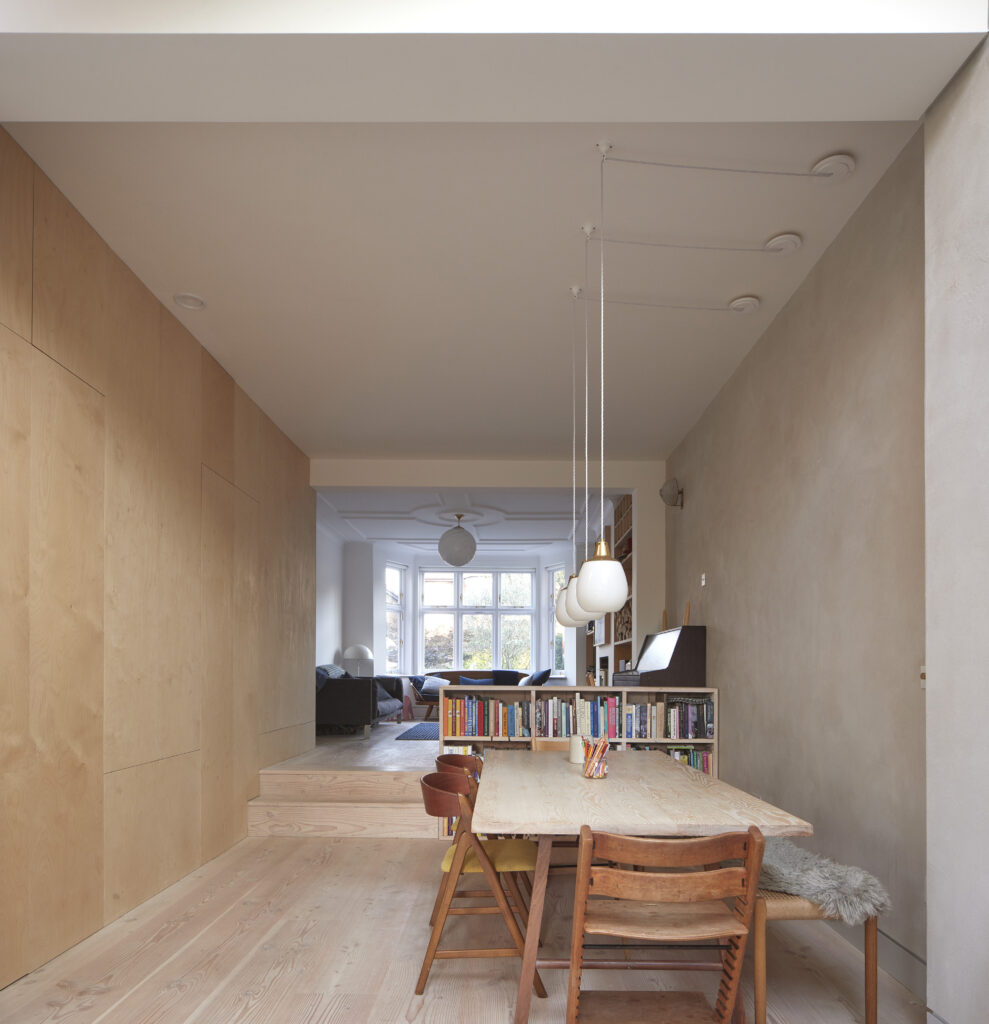
Conclusion
As an architecture studio dedicated to low energy and low embodied carbon designs, we see plaster as a material and a medium of creative expression. Its natural composition, versatility, and durability make it an attractive choice for both traditional and contemporary designs. Exploring its different types and understanding their unique attributes is an exciting journey that I hope this guide has illuminated for you. It is our firm belief that as we continue to appreciate and explore this versatile medium, we will see more creative and sustainable uses for plaster in the architecture of tomorrow.
If you would like to talk through your project with the team, please do get in touch at mail@risedesignstudio.co.uk or give us a call on 020 3290 1003
RISE Design Studio Architects company reg no: 08129708 VAT no: GB158316403 © RISE Design Studio. Trading since 2011.
